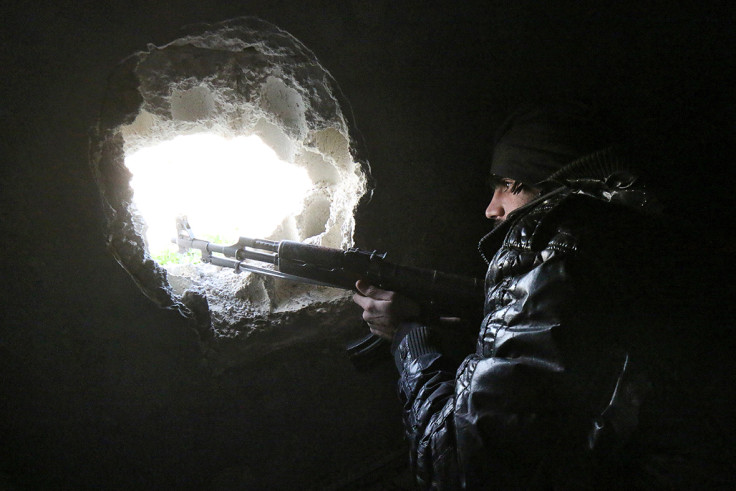Iran: Refugees threatened with death or deportation if they don't join fight against Isis

Afghan refugees living in Iran are being sent to fight Isis in Syria, with the threat of death or deportation if they don't comply, sources from inside the Islamic Republic said.
Almost 7,000 people from Afghanistan have been sent to help prop up Bashar al-Assad's regime in Syria, according to sources from the People's Mojahedin Organization of Iran (MEK) inside the Iranian Revolutionary guards (IRGC).
However, there is a growing resistance from members of the 'Fatemiyoun Division', the name given to Afghan's recruited by the Iranian authorities for the purpose of being sent to Syria, due to the high death toll.
The MEK said: "In recent years, Afghan refugees living in Iran have been tapped for this purpose. The Iranian regime has employed different tactics, including threatening deportation from Iran, imprisonment or even execution (all serious violations of human rights) to dispatch the Afghan refugees to Syria.
"Afghans are recruited using many ploys, including offering monthly salaries or even by threatening their eviction from Iran, as well as other threats as mentioned above."
It added: "Once someone in Fatemiyoun is killed or injured, no salaries or payments are made to them or their families. Thus their families are left with no one to support them.
Moreover, the injured have to pay for their medical expenses and medicine as well. From this point on, the regime just deserts them, and no government institution provides them with any support...
"This situation has led to a crisis with Afghans living in Iran and has raised much discontent and popular loath among Afghans that are sent to Syria and their families. Afghans living in Iran are no longer willing to go to Syria to fight, leaving the Iranian regime short of much-needed forces to prop up Assad."
Some of the claims of members of the MEK are supported by a recent report from Human Rights Watch, which interviewed 24 people from Afghanistan living in Iran, some of whom said family members had been coerced into fighting in Syria, while others maintained they had volunteered to fight.
Peter Bouckaert, emergencies director at Human Rights Watch, said: "Iran has not just offered Afghan refugees and migrants incentives to fight in Syria, but several said they were threatened with deportation back to Afghanistan unless they did.
"Faced with this bleak choice, some of these Afghan men and boys fled Iran for Europe."
It is believed that some people were given a choice between deportation or fighting, with recruiting reportedly also taking place in prisons, where people without official documentation are detained and pressured into fighting.
A 17-year-old boy from Afghanistan, Masheed Ahmadzai, whose name has been changed to protect his identity, told Human Rights Watch that he had been living in Iran for four years without documentation and was working in construction when he was seized by police and taken to a military compound.
He said: "The military officers selected us, and then they separated us into those fit to fight, and those not fit to fight.
"They took me with a group of 20 men, but did not select my cousin and deported him to Afghanistan... They did not give us a choice; they forced us to train and fight.
"They said, 'You will fight in Syria and become a martyr, and that is a good thing'. They forced all of us who were physically fit to fight."
Military conscription is legal in the Islamic Republic for Iranian nationals, but this does not officially extend to those seeking asylum.
With the NGO estimating that more than 3 million refugees from Afghanistan are currently living in Iran, the numbers of Fatemiyoun Division fighters sent to Syria from the Islamic republic in 2015 is thought to have grown almost threefold.
However, with enthusiasm for joining the division dwindling, and a spotlight on practices that force refugees into fighting, it is unclear how many people will be sent to Syria in 2016.
© Copyright IBTimes 2025. All rights reserved.






















